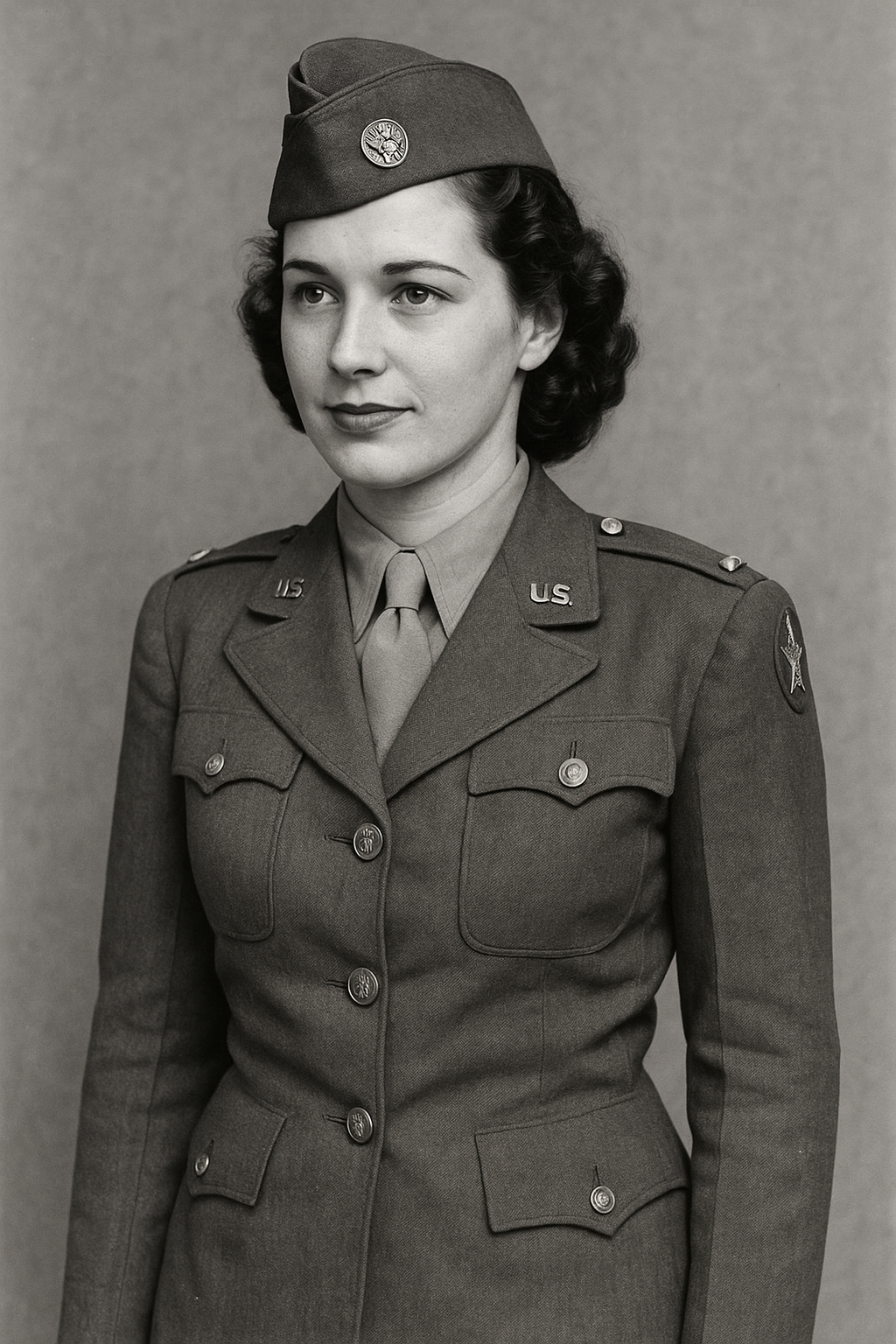
WW2 Female Uniform Guide: History, Style, and Surprising Facts About Women in WWII
Published on Sep 30, 2025
Introduction: Did You Know Over 350,000 Women Served in the U.S. Military During WWII?
That’s right — approximately 350,000 women served in various branches of the U.S. military during World War II. Yet, their uniforms and roles remain an often overlooked part of wartime history. From the Women’s Army Corps (WAC) to the Navy WAVES and Air Force WASPs, these uniforms weren’t just practical — they represented a pivotal shift in gender roles and military culture.
In this guide, we'll explore the WW2 female uniform in all its detail, share tips for identifying authentic pieces, highlight current collecting trends, and answer questions like "approximately how many women served in the military during WWII?" Whether you’re a history buff, reenactor, or new to wartime memorabilia, this is your go-to resource.
What Was the WW2 Female Uniform? A Closer Look at Style and Function
WW2 women’s uniforms were designed for both function and form — a blend of utility and modesty shaped by the times.
Main Branches and Their Uniforms
- WAC (Women’s Army Corps)
- The WAC WW2 uniform was the most recognisable. It included olive drab jackets, khaki skirts, and a distinctive garrison cap. WACs also wore special insignia to denote their units.
- WAVES (Women Accepted for Volunteer Emergency Service)
- Navy uniforms were navy blue with white blouses and practical shoes. WAVES uniforms mirrored male versions but were adapted for fit.
- WASPs (Women Airforce Service Pilots)
- These pilots wore flight suits and gear similar to their male counterparts, with minor modifications for comfort and practicality.
- Nurses and Medical Corps
- Medical uniforms often consisted of white dresses, aprons, and caps — more traditional, but equally vital.
Key Uniform Components
- Skirt (knee-length, wool blend)
- Button-up blouse (cotton, often khaki or white)
- Garrison or overseas cap
- Jacket (wool, structured)
- Service shoes (low-heeled, practical)
WW2 Female Uniform: Iconic Headgear and Accessories
The Role of the WW1 Women’s Field Cap and Its Evolution
While WW2 women’s headgear became more standardised, earlier examples like the WW1 women’s field cap paved the way for better design. These early caps offered minimal protection but symbolised growing female involvement in military efforts.
In WW2, the garrison cap and service cap became standard issue—accessories like armbands, insignias, and utility belts varied by branch.
How to Start Your Own WW2 Female Uniform Collection
Getting started in collecting WW2 women’s uniforms can be thrilling — but there are some traps to avoid.
Step-by-Step for Beginners
- Research the Branches First
- Learn the differences between WAC, WAVES, WASPs, and Nurse Corps.
- Focus on one branch initially to keep things manageable.
- Start Small
- Begin with accessories like caps or insignia before investing in full uniforms.
- Use Trusted Sources
- Buy from reputable vintage militaria dealers or verified auctions.
- Join online forums and Facebook groups to gain insights from other collectors.
- Inspect for Authenticity
- Look for dated tags, original stitching, and appropriate materials (wool, cotton).
- Watch for reproductions — some are very convincing.
What to Avoid
- Overpaying for common items.
- Buying without provenance (history of the item).
- Ignoring storage needs — wool and cotton require proper care.
WW2 Female Uniform: Modern Trends and Reenactment Tips
Today, WW2 women’s uniforms are more than relics. They’re worn by:
- Historical reenactors
- Film and theatre productions
- Museum docents and educators
Modern Trends to Watch
- Reproduction Uniforms
- High-quality replicas are used in living history events.
- Some companies specialise in WAC WW2 gear with historically accurate materials.
- Digital Archives and Databases
- Museums and collectors now use 3D scanning to catalogue uniforms online.
- Increased Interest in Diverse Roles
- More focus is being placed on non-white servicewomen and lesser-known units, expanding the historical narrative.
Famous Women and Their Uniforms: Real-Life Examples
- Oveta Culp Hobby – First director of the WAC; often wore the full regulation WAC WW2 uniform.
- Hazel Lee – One of the first Chinese-American WASPs; her flight gear and story are preserved in aviation museums.
- Charity Adams Earley – First African-American woman officer in the WAC; known for her commanding presence in official WAC attire.
These stories give life to the uniforms — reminding us that each piece of clothing had a person and a mission behind it.
Actionable Tips for Identifying Authentic WW2 Women’s Uniforms
Here’s how to make sure what you’re looking at is real:
- Look for military spec labels with dates and contract numbers.
- Compare stitching — WWII uniforms used specific machines and thread types.
- Smell the fabric (yes, really!) — old wool has a distinct odour.
- Check historical photos for comparison.
Consult with a museum curator or experienced collector before making big purchases.
Common Pitfalls in Researching WW2 Women’s Uniforms
Even seasoned collectors and historians stumble. Here are some traps to avoid:
- Confusing WW2 uniforms with Korean War or post-war variants
- Assuming all women wore the same uniform
- Not factoring in seasonal variations (summer vs winter uniforms)
- Overlooking lesser-known roles like war correspondents or Red Cross workers
Conclusion: Why the WW2 Female Uniform Still Matters Today
The WW2 female uniform is more than just cloth — it's a symbol of courage, change, and contribution. With approximately 350,000 women serving in the military during WWII, their clothing represented a massive cultural shift and set the stage for future generations.
Whether you’re collecting, reenacting, or just curious, understanding WW2 women’s uniforms brings us closer to the human stories of the past. Don’t overlook the caps, the jackets, or even the buttons — every detail tells a story.
